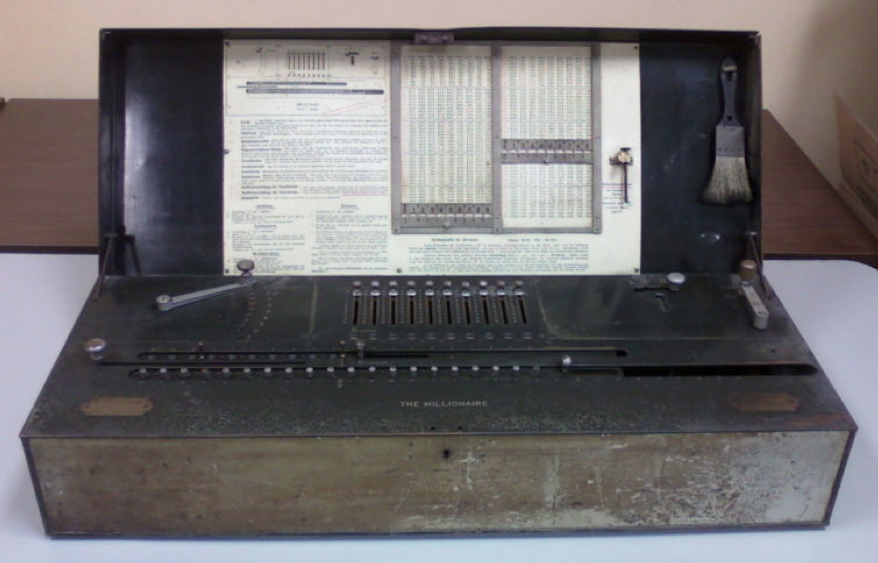
1912 Millionaire Calculating Machine #2015
The Millionaire was developed as a true multiplying/dividing machine, utilising a digital multiplication table stored within it in the form of metal rods. These were interogated when the crank was turned enabling an instant multiplication/dibision of the multiplicand set with the sliders by any integer from 1 to 9. For each cycle the machine advances the internal carriage one place allowing the next number of the multiplier to be set and applied. When the multiplier is set to 1 the machine acts as an adding/subtracting machine.
This machine is rare, even amongst the few surviving machines. It is a 10×10×20 capacity machine, with 10 sliders giving greater accuracy than the usual 8. In the register of 117 known surviving machines only 10 are with this 10×10×20 extended capacity.1
This machine was acquired in 1954 from the New York Central Rail Road Co. by a private owner. Chancellor University, Ohio, probably acquired it from this owner in the late 1960s or 1970s. The Librarian was seeking to acquire objects that represented the long history of the University stretching back to the mid nineteenth century. The collection includes the original instruction booklet, a letter dated 11/20/1967 from H.W. Egli Ltd. Zurich (the manufacturer) verifying date of manufacture and delivery and a 1967 letter from the Smithsonian Institute with information about Millionaire calculating machines.
Diensions are: Weight - 81 lbs. Width - 30.25 inches Height - 7 inches Depth - 11.25 inches Words on left plate: “W.A. Morsehhauser; SOLE AGENT; 1 Madison Avenue; NEW YORK CITY.”
Words on right plate: “Hans W. Egli; Ingenieur; Fabrikation Rechenmaschinen; Pat. O. Steiger; ZURICH II.” “No. 2015” Stamped into case under right plate.
1 see John Wolff ‘s Web Museum Register of Millionaire Calculators (↑)
Pages linked to this page
 This work by Jim Falk is licensed under a Creative Commons Attribution-NonCommercial-NoDerivs 3.0 Unported License Click on the logo to the left to see the terms on which you can use it.
This work by Jim Falk is licensed under a Creative Commons Attribution-NonCommercial-NoDerivs 3.0 Unported License Click on the logo to the left to see the terms on which you can use it.